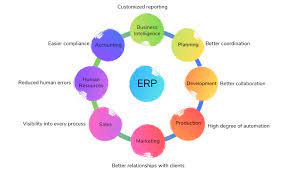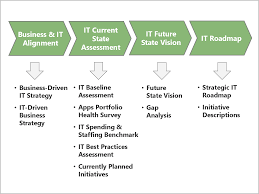Mastering the Art of Software Application Development: A Comprehensive Guide
The Art and Science of Software Application Development
Software application development is both an art and a science that involves the creation, design, testing, and maintenance of computer software applications. In today’s digital age, where technology plays a crucial role in almost every aspect of our lives, the demand for innovative and user-friendly software applications continues to grow.
The Process of Software Application Development
Developing a software application is a complex process that requires a systematic approach. It typically involves the following key stages:
- Planning: This stage involves defining the scope of the project, setting goals and objectives, and creating a roadmap for development.
- Design: During this stage, developers create the architecture and design of the application, including user interface design and database design.
- Development: Developers write the code for the application based on the design specifications. This stage may involve multiple iterations and testing to ensure functionality.
- Testing: Testing is a critical phase where developers evaluate the application’s performance, identify bugs or issues, and make necessary adjustments.
- Deployment: Once the application is tested and approved, it is deployed to production environments for end-users to access.
- Maintenance: After deployment, developers continue to monitor and maintain the application to ensure optimal performance and address any issues that may arise.
The Role of Developers in Software Application Development
Software developers play a vital role in every stage of the software application development process. They are responsible for writing code, debugging errors, optimizing performance, and ensuring that the application meets user requirements. Developers must have strong problem-solving skills, attention to detail, and proficiency in programming languages such as Java, C++, Python, or JavaScript.
The Future of Software Application Development
As technology continues to evolve rapidly, the future of software application development looks promising. Emerging trends such as artificial intelligence (AI), machine learning (ML), Internet of Things (IoT), and cloud computing are reshaping how applications are developed and deployed. Developers must stay current with these trends to create innovative solutions that meet the changing needs of users.
In conclusion, software application development is a dynamic field that requires creativity, technical expertise, collaboration, and continuous learning. By embracing new technologies and best practices in development processes, developers can create cutting-edge applications that enhance user experiences and drive digital transformation across industries.
7 Essential Tips for Successful Software Application Development
- Plan and design your software application thoroughly before starting development.
- Follow best practices and coding standards to ensure code quality and maintainability.
- Regularly test your application to catch bugs early on and ensure proper functionality.
- Utilize version control systems like Git to track changes and collaborate with team members effectively.
- Prioritize security measures to protect user data and prevent vulnerabilities in your application.
- Document your code, including comments and README files, to make it easier for others to understand and contribute.
- Stay updated with the latest technologies and trends in software development to enhance your skills and stay competitive.
Plan and design your software application thoroughly before starting development.
It is crucial to plan and design your software application thoroughly before starting development. By investing time in the initial planning and design stages, you can establish a clear roadmap for the project, define specific goals and requirements, and create a solid foundation for development. Thorough planning helps identify potential challenges early on, allows for efficient resource allocation, and ensures that the final product meets user expectations. A well-thought-out plan and design significantly contribute to the success of the software application development process by minimizing risks and maximizing efficiency.
Follow best practices and coding standards to ensure code quality and maintainability.
Following best practices and coding standards is essential in software application development to uphold code quality and maintainability. By adhering to established guidelines and standards, developers can write clean, efficient, and organized code that is easier to understand, debug, and maintain. Consistent coding practices also promote collaboration among team members and facilitate the integration of new features or updates seamlessly. Ultimately, prioritizing best practices in coding contributes to the overall success of a project by reducing errors, enhancing scalability, and improving the longevity of the software application.
Regularly test your application to catch bugs early on and ensure proper functionality.
Regularly testing your software application is a crucial step in the development process to identify and address bugs early on, ensuring that the application functions correctly. By conducting thorough and systematic testing, developers can detect issues before they escalate, leading to a more stable and reliable product. Testing also helps in verifying that the application meets user requirements and delivers a seamless experience. Emphasizing regular testing not only improves the quality of the software but also saves time and resources in the long run by preventing major issues down the line.
Utilize version control systems like Git to track changes and collaborate with team members effectively.
Utilizing version control systems like Git in software application development is crucial for tracking changes and collaborating with team members effectively. By using Git, developers can maintain a history of code modifications, revert to previous versions if needed, and merge changes seamlessly. This ensures that team members can work concurrently on the same codebase without conflicts, improving productivity and code quality. Additionally, version control systems like Git provide a centralized platform for collaboration, enabling teams to communicate, review code, and contribute to projects efficiently.
Prioritize security measures to protect user data and prevent vulnerabilities in your application.
It is crucial to prioritize security measures in software application development to safeguard user data and prevent vulnerabilities. By implementing robust security protocols and encryption techniques, developers can create a secure environment that protects sensitive information from unauthorized access and cyber threats. Prioritizing security not only builds trust with users but also helps mitigate the risks of data breaches and potential damages to both individuals and businesses.
Document your code, including comments and README files, to make it easier for others to understand and contribute.
Documenting your code, which includes adding comments within the code and creating README files, is a crucial tip in software application development. By documenting your code effectively, you provide valuable insights into the functionality, structure, and purpose of the codebase. This not only helps others understand the logic behind your implementation but also makes it easier for them to contribute to the project by building upon existing code. Clear and concise documentation enhances collaboration among team members, improves code maintainability, and ultimately leads to the development of more robust and scalable software applications.
Stay updated with the latest technologies and trends in software development to enhance your skills and stay competitive.
Staying updated with the latest technologies and trends in software development is essential for enhancing your skills and remaining competitive in the ever-evolving industry. By keeping abreast of new tools, programming languages, frameworks, and best practices, you can expand your knowledge base, improve your efficiency, and deliver innovative solutions that meet the demands of modern users. Continuous learning and adaptation to emerging trends not only benefit your professional growth but also ensure that you stay ahead of the curve in a dynamic and competitive software development landscape.




